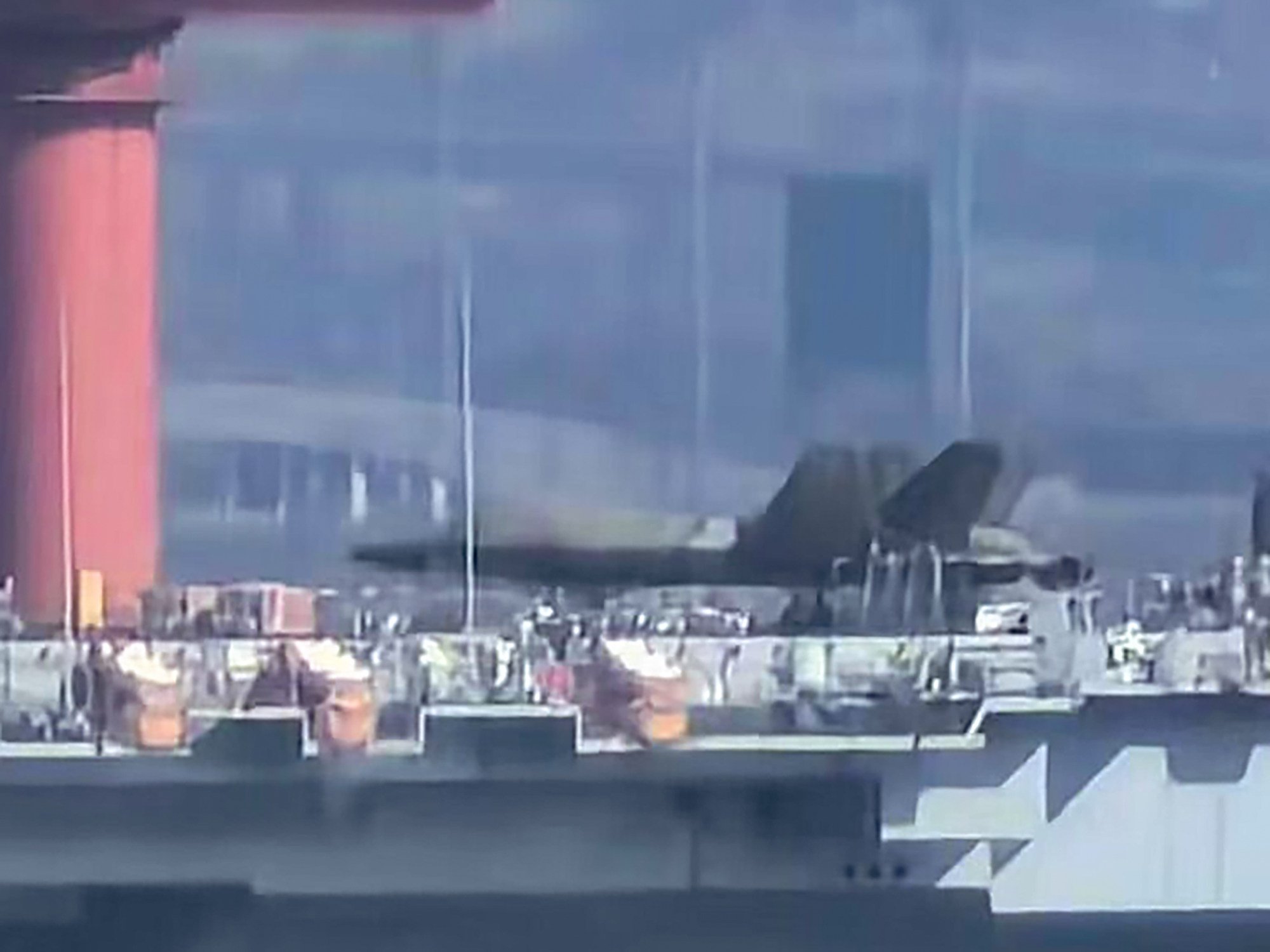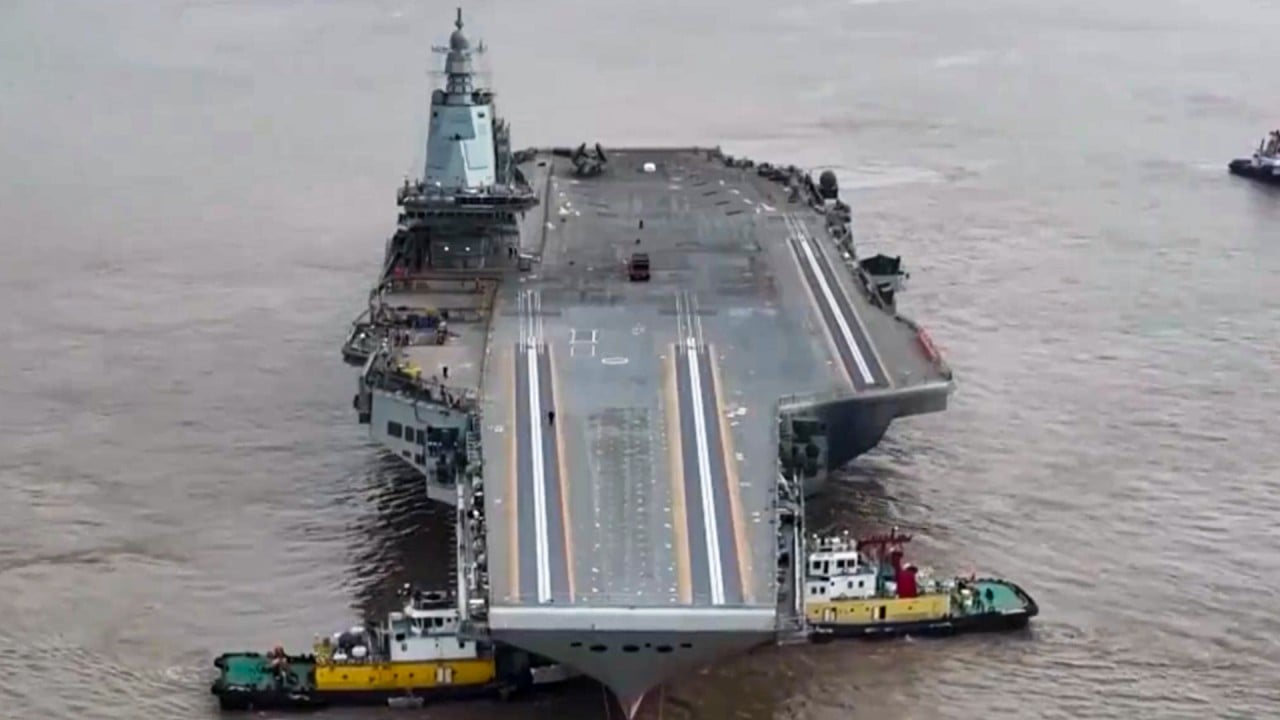
Fresh sightings of China’s J-35 fighter ambitions on deck of Liaoning aircraft carrier
- Photos have been posted online of what appears to be a full-size model of the jet on the country’s carrier
- The aircraft is still in the development phase and will have to be able to handle ski-jump and electromagnetic catapult systems, analyst says
Then on Monday state-owned, Hong Kong-based newspaper Wen Wei Pao published clearer pictures of the dummy wrapped in a tarpaulin on the carrier at a shipyard on the northeast coast owned by Dalian Shipbuilding Industry Company.

The J-35 is being developed by Shenyang Aircraft Corporation as China’s second fifth-generation fighter jet, following the J-20.
The jet is designed for use on aircraft carriers and is still in the development and prototype phase but it is touted as the Chinese equivalent of Lockheed Martin’s fifth-generation fighter jet, the F-35.
Collin Koh, a senior fellow at the S. Rajaratnam School of International Studies in Singapore, said the dummy of the J-35 could serve various purposes.
“One most straightforward assessment is that the Liaoning, which has long been designated as a test bed for PLA carrier capabilities, is conducting experiments on the J-35 as a viable carrier-borne fighter jet,” Koh said.
He said the dummy could also be for “signalling purposes”.
“The Chinese are possibly aware they’re being watched with interest by external parties so the mock-up is put out there in open view to send a veritable signal, possibly to the US,” Koh said.

A scale model of the J-35 was first unveiled at the Zhuhai Airshow in 2012 and observers say the most recent images indicate the jets could soon be in operation.
Once handed over to the People’s Liberation Army, the J-35 is likely to be mixed and matched with the fourth-generation J-15 already on the Liaoning and Shandong, China’s second carrier.
Yue Gang, a retired PLA colonel, said it was feasible to deploy the J-35 on all three Chinese carriers.
But the fighter’s guidance systems and maintenance facilities would have to be adapted for the Liaoning, the carrier that was commissioned over a decade ago.
“If the deployment test on Liaoning is successful ... the same deployment will be implemented on the Shandong and Fujian ships as soon as possible,” he said, adding that similar developments in Japan and the US had prompted China to speed up.
But having J-35s on carriers of different launch types could be challenging, according to Yoon Suk-joon, a visiting research fellow at the Korea Institute for Military Affairs and specialist in Chinese weapons systems.
“There is a significant technical and operational difference between the [ski jump ramps] and the [electromagnetic catapult] method,” Yoon said.
“This means that even if the J-35 type is mounted on the Fujian for sea trials, training is required for the carrier-based aircraft pilots already on the Liaoning and Shandong.
“There is a big difference between doing this on an actual aircraft carrier than on the ground.”
China has been promoting its new stealth fighters abroad in an attempt to present its aircraft as a choice for countries without access to US and European fifth-generation jets.
Chinese state-owned firms showcased a model of a J-35 – also known as the FC-31 – at the World Defence Show in Riyadh, Saudi Arabia, earlier this month. It was also featured in the International Defence Exhibition and Conference in Abu Dhabi last year.
Last month, Pakistani Air Chief Marshal Zaheer Ahmed Baber Sidhu announced that his country planned to buy the jets as part of plans to modernise its air force, but did not give further details of the procurement.
Koh said that he was not aware of potential buyers other than Pakistan.
“Still, the J-35 would serve as a potential alternative buy among a host of offerings worldwide, and depending on the client’s financing ability and mission requirements, as well as political considerations,” Koh said.
“But for now, one can only say the J-35 has potential, especially among the less-endowed air arms around the world, in particular in the developing world.”



